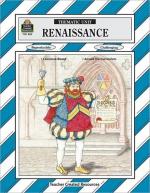|
This section contains 803 words (approx. 3 pages at 300 words per page) |

|
Class Strategies. What about people who could not or chose not to get married? In eastern Europe, with a much earlier average age at first marriage, the number of people who never married was small, and most of them were in convents or monasteries. In southern Europe, most men married, but wealthy or middle-class women who chose not to marry, or whose parents could not raise a dowry large enough to obtain an appropriate husband, ended up in convents, whose standards about strict living were often not very high so that the women lived the same comfortable lifestyle they would have on the outside. In 1552 in Florence, for example, there were 441 male friars and 2,786 nuns out of a population of 59,000; the difference resulted not from women's great religious fervor, but from a staggering increase in the size of the dowry required for...
|
This section contains 803 words (approx. 3 pages at 300 words per page) |

|




